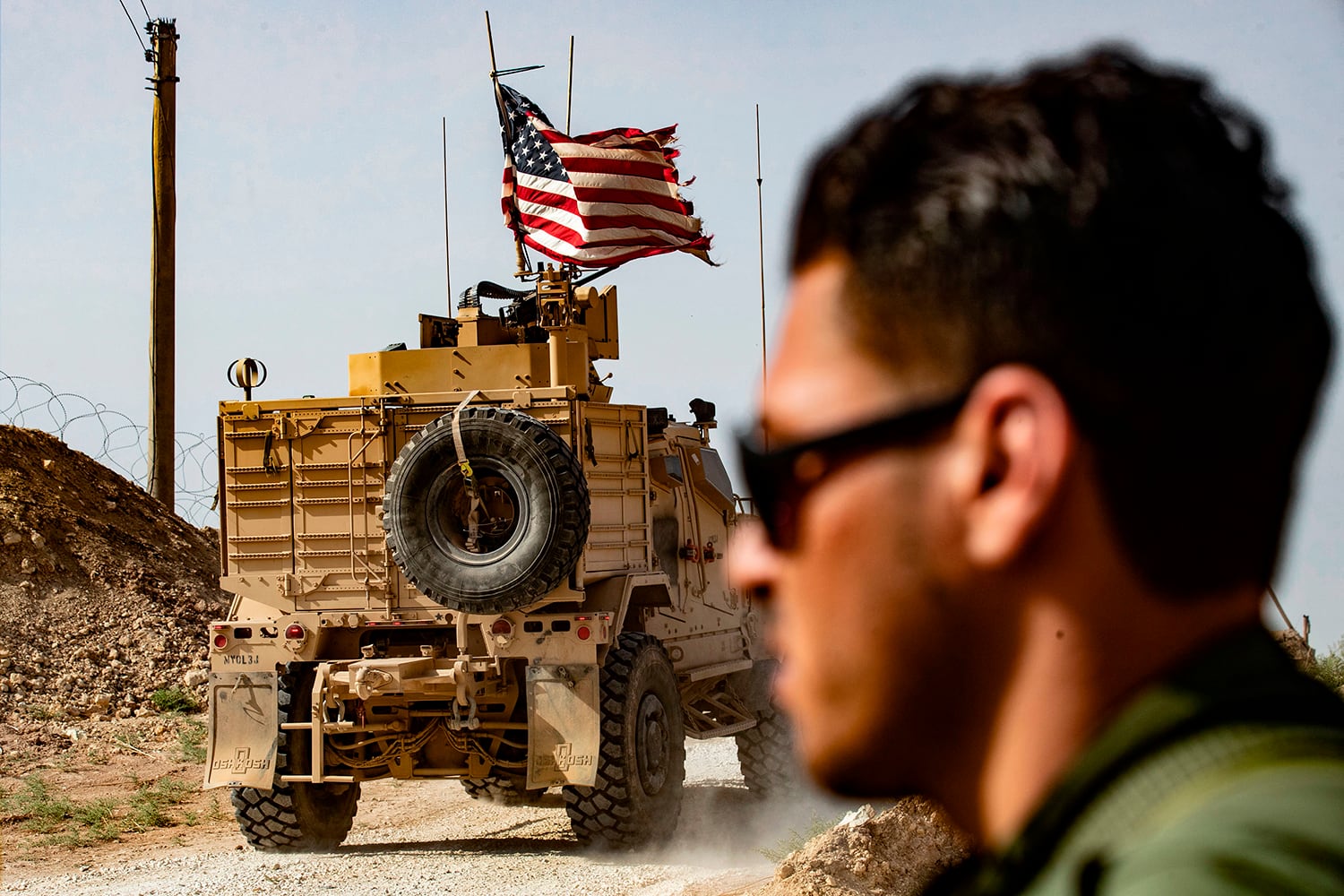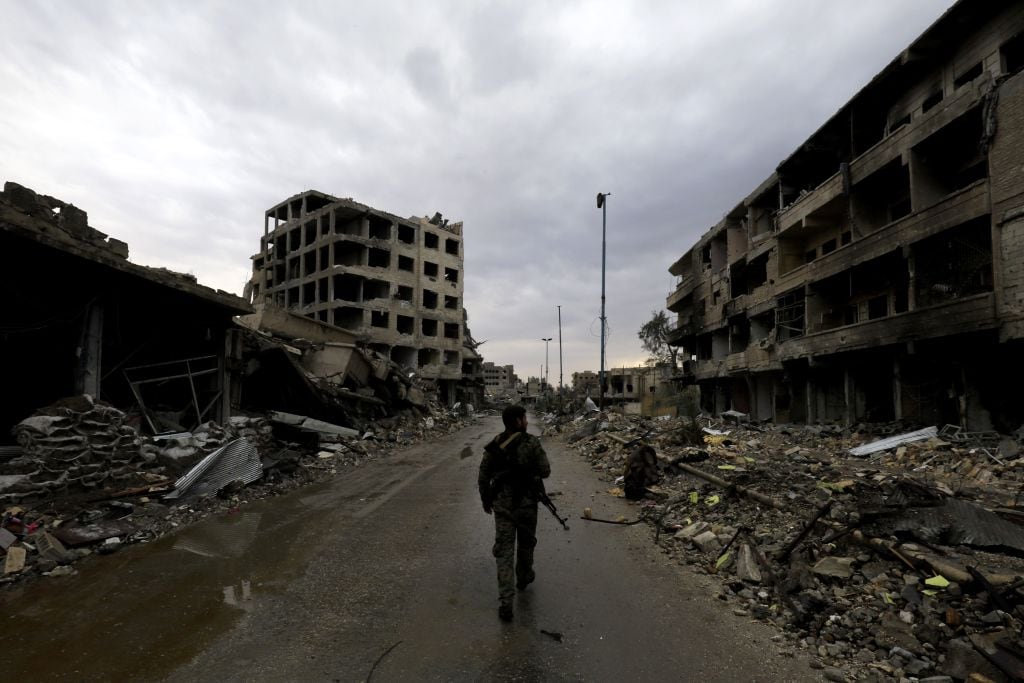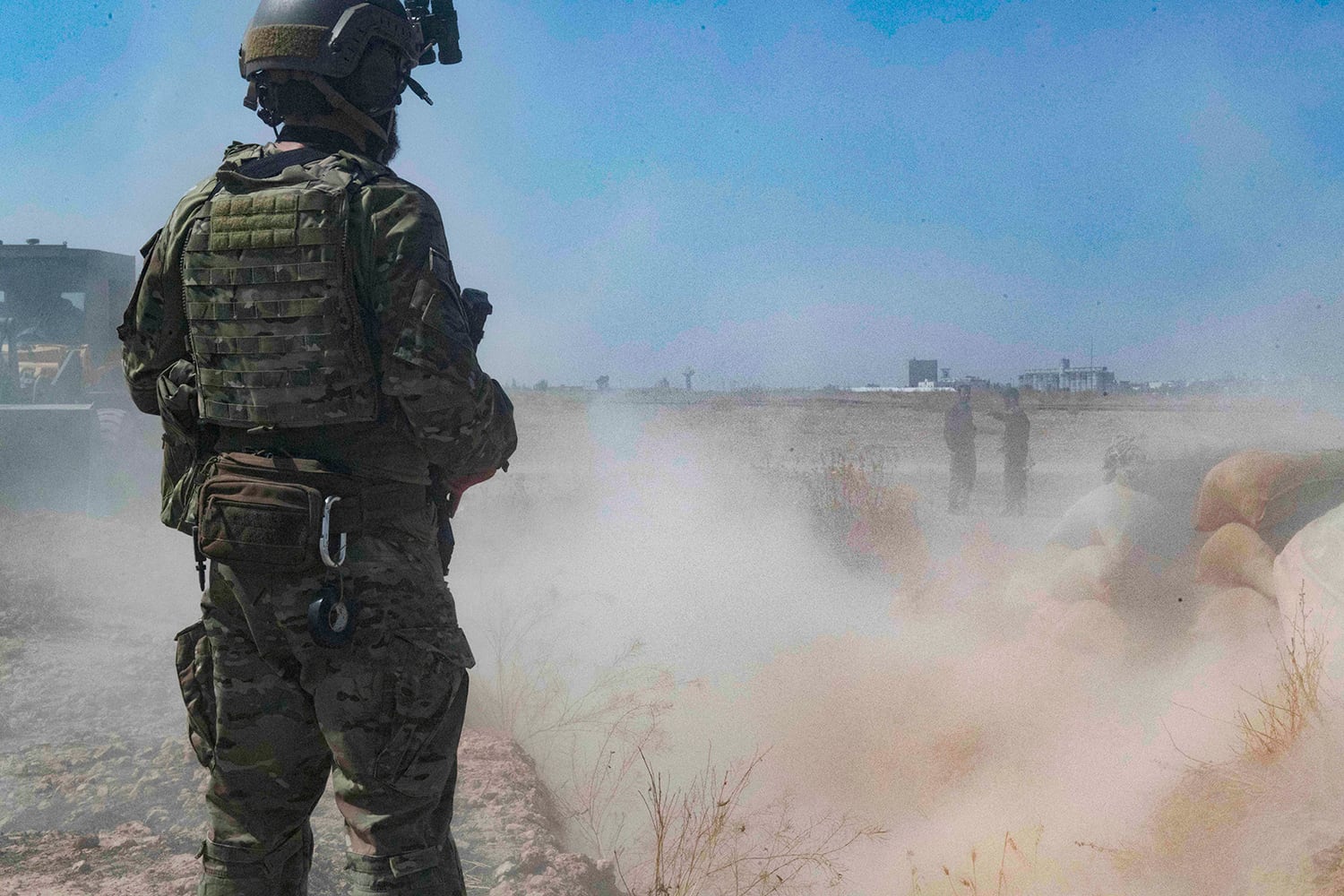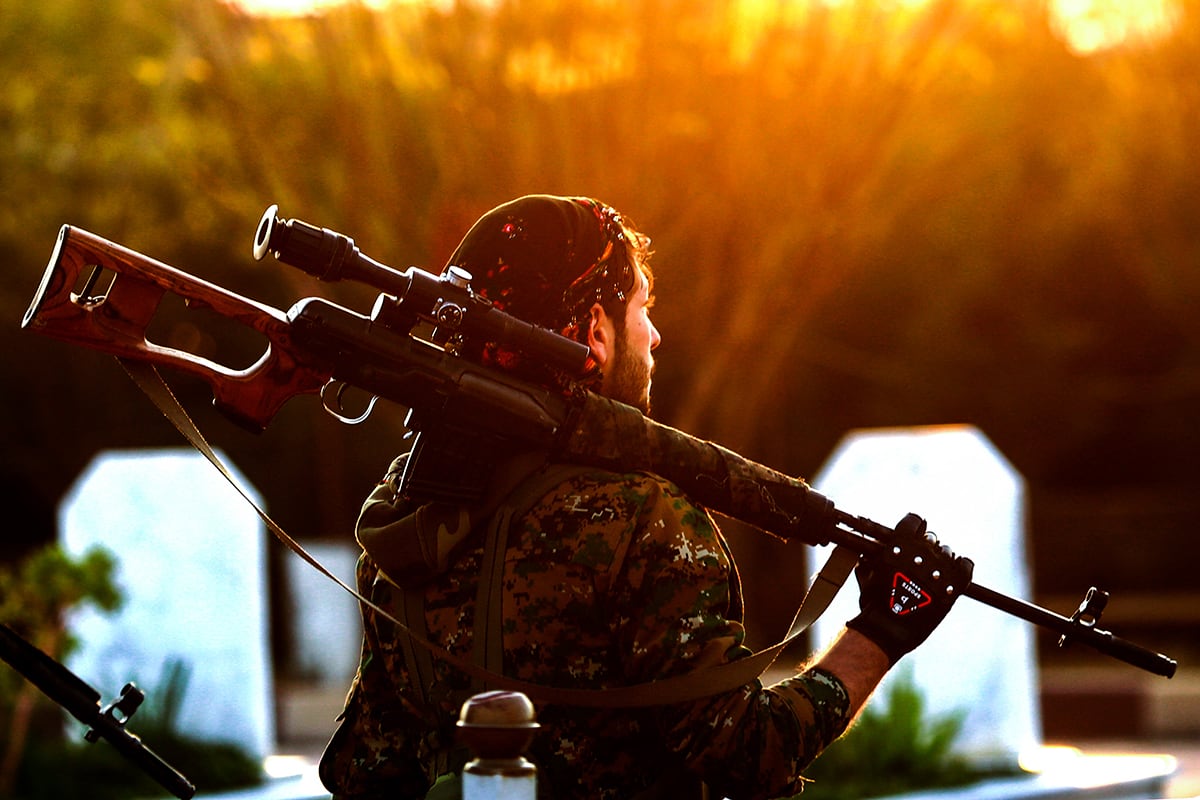It was a global rallying cry as Kurdish fighters besieged in the Syrian city of Kobani began to fight back what appeared to be an invincible wave of ISIS fighters pillaging the region in 2014.
With the aid of U.S. airstrikes, Kurdish fighters would eventually take back the city in January 2015, and a steadfast partnership was born between the U.S. military and the Kurdish-led forces who ultimately re-branded themselves as the Syrian Democratic Forces.
Nearly five years later, and 11,000 SDF killed liberating northeast Syria from ISIS’ hellish rule, the nearly 60,000 U.S.-trained force has been abandoned by its American partners and is under sustained assault by Turkish forces and their ragtag crew of proxy fighters — some who have reportedly fought under ISIS and al-Qaida banners.
The SDF’s demise threatens to erase gains over the last five years that have forced ISIS militants into hiding in remote pockets in the desert and across the Euphrates.
A sustained counterterrorism campaign to knock out ISIS sleeper cells is in jeopardy of ending as Turkish warplanes reportedly destroyed a coalition-trained SDF commando camp tasked with taking out ISIS leaders and financiers.
RELATED

Hundreds of ISIS prisoners have escaped from makeshift detention facilities under the watch of SDF forces as Turkish forces plowed through northern Syria. Left to defend themselves from the Turkish barrage, SDF forces warned it could no longer prioritize guarding the ISIS camps.
President Donald Trump tweeted Monday that the Kurds may intentionally be releasing ISIS prisoners to get the U.S. involved.
The SDF’s military fate and its experiment in semi-autonomous rule across northern Syria began to collapse following an Oct. 6 announcement from the White House that it would withdraw U.S. forces from northern Syria — setting the stage for a long-planned Turkish operation to rout Kurdish militants.
Turkey has long been frustrated by America’s military assistance to the Kurdish-led SDF forces. Turkey views YPG fighters who fight under the SDF banner as an armed wing of the internationally designated terrorist group the Kurdistan Workers’ Party or PKK.
U.S. military officials have oft hailed the SDF as the only competent military force in northern Syria capable of liberating major cities like Raqqa from ISIS.

The withdrawal of U.S. forces from northern Syria at first was only roughly 50 special operations forces, according to a briefing by a senior U.S. official with President Donald Trump’s administration.
Following the withdrawal, Turkish President Recep Tayyip Erdoğan announced Wednesday the start of military operations to combat the U.S.-backed Kurdish fighters and the establishment of a safety zone to resettle Syrian refugees.
Bombarded by Turkish warplanes, SDF forces pleaded with the coalition to establish a no-fly zone.
As no coalition aid came, U.S. forces were still postured in Kobani and other areas in northern Syria.
But the U.S. footprint in northern Syria would drastically change following a danger close artillery strike by Turkish forces near a U.S. position in Kobani on Friday. No American troops were hurt in the strike.
CNN’s Barbara Starr reported, citing a U.S. official, that the U.S. has not come to a final determination on whether the Turkish artillery strike was deliberate.
Some U.S. troops and veterans who served in artillery believe Turkey’s artillery shot at U.S. troops was intentional.
A former Marine and YPG veteran who fought for the Kurdish group in 2015 told Military Times that Turkey was trying to “smoke” out U.S. forces from Kobani so they could siege the city.
On Sunday, Secretary of Defense Mark Esper said on the CBS Sunday morning Face the Nation show that Trump had directed the military to begin “a deliberate withdrawal of forces from northern Syria.”
About 1,000 U.S. troops were in northern Syria prior to Esper’s remarks on CBS.
NPR reported that the only troops that will remain in Syria are a small handful of U.S. special operators housed in a garrison at the Syria-Iraq border known as al-Tanf. The American commandos at Tanf are tasked with training a small anti-ISIS force separate from the SDF mission.
The withdrawal of American forces from Syria has been described as an abandonment of an ally in the region and a policy failure for the U.S.
RELATED

“Bottom line: it’s shameful to leave partners to their fate and the mercies of hostile actors with no thought, plan or process in place. I wish my former SDF colleagues the best as they find new patrons. We won a war together. That’s something nobody can take away from us,” Brett McGurk, the former Trump administration adviser to the anti-ISIS fight, tweeted Sunday.
The SDF have since made a deal with Syrian regime forces to deploy its forces in northern Syria to confront Turkey and its proxy forces.
Syrian state owned media SANA reported Sunday that the Syrian army was moving north to confront Turkish forces. SANA posted a photo Monday of Syrian army forces deployed to the town of Tal Tamr in Hasaka province, Syria.
The Turkish Ministry of Defense tweeted Monday that its forces had killed 550 PKK and YPG terrorists.
Shawn Snow is the senior reporter for Marine Corps Times and a Marine Corps veteran.




